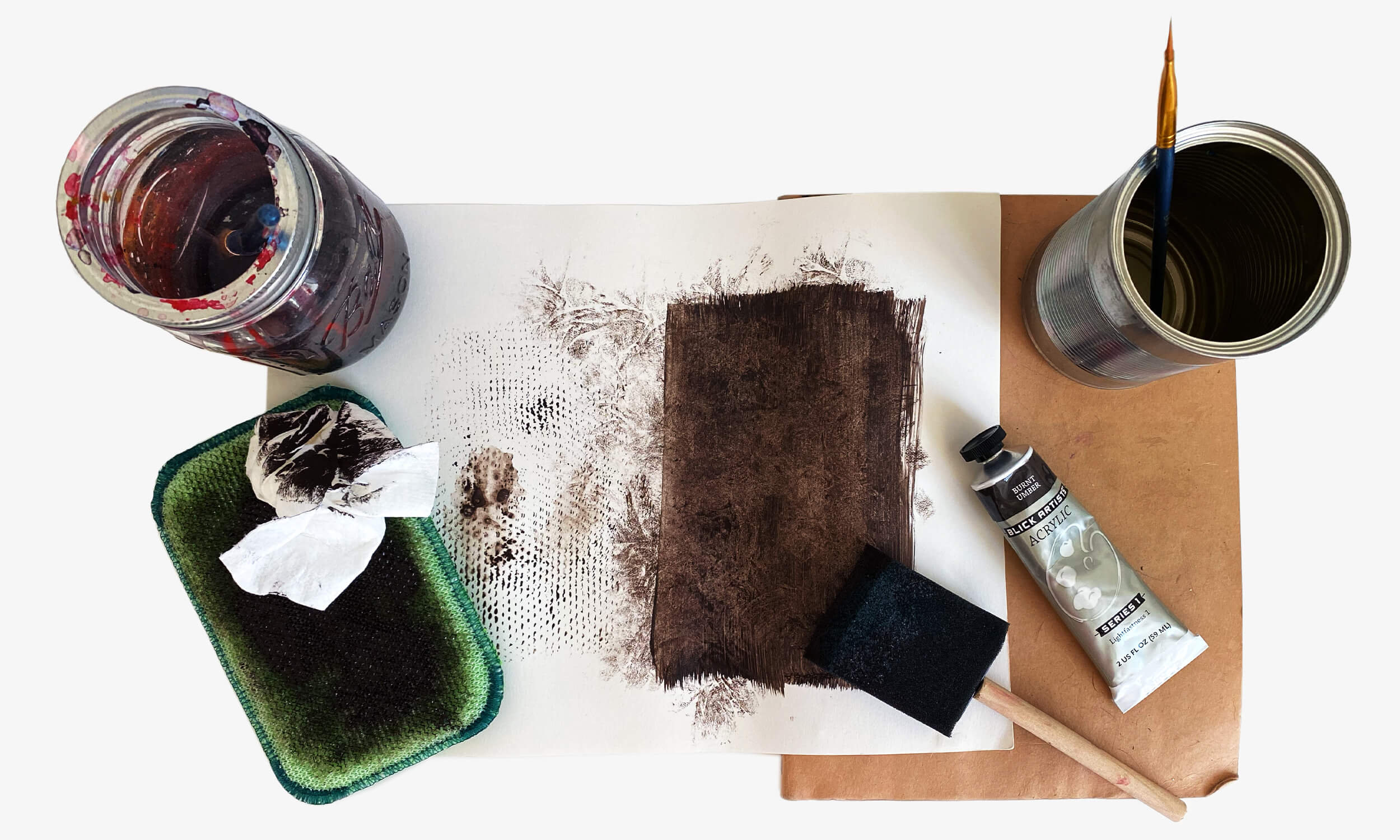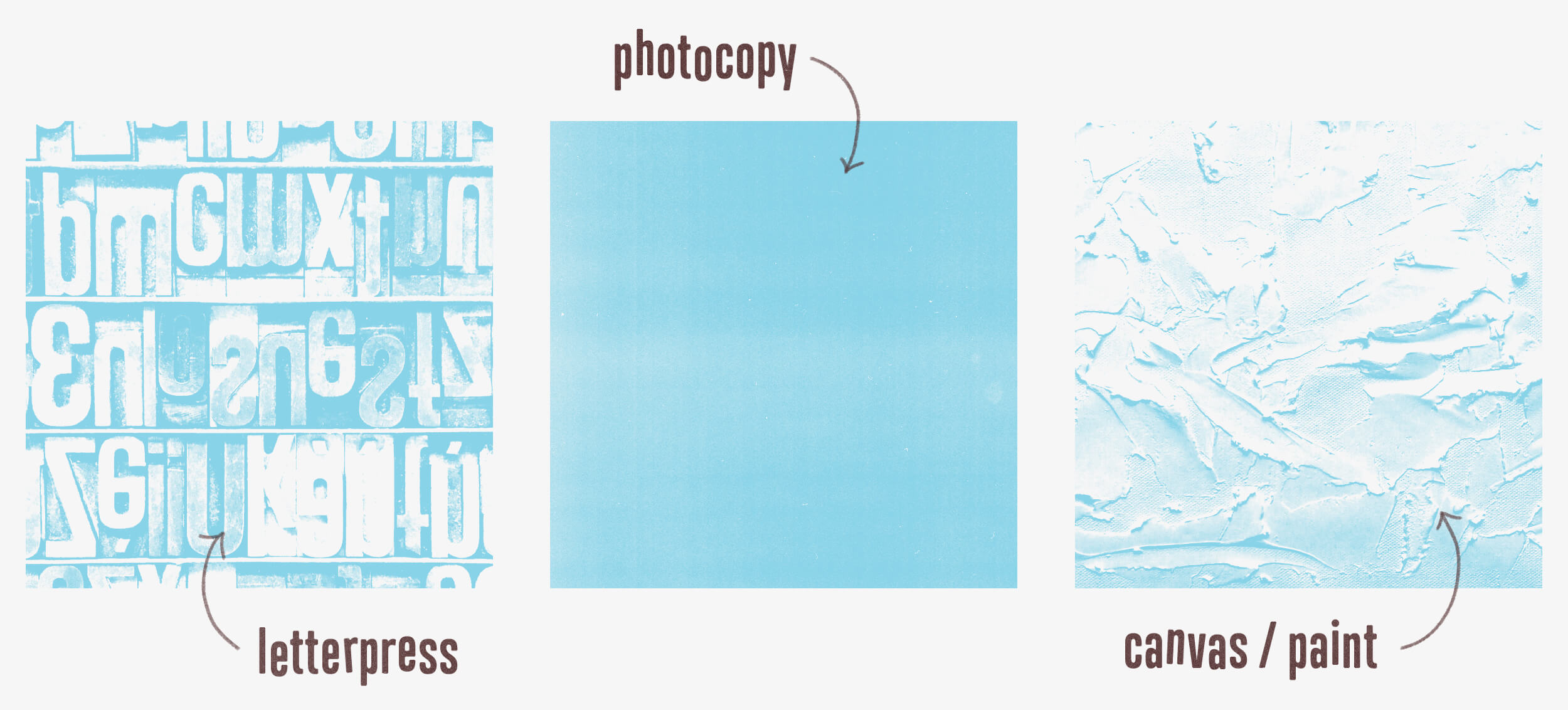When it comes to sprucing up typography, we love a good texture moment. Whether it’s overlaying texture right on top or sprucing up the edges, it can be hard to decide what texture is right for your design. We’re gonna lay out a few of our favorite techniques for getting gritty.
1. DIY Textures
One of the most creative ways to add texture to your design work is to create your own textures. This makes for the most unique looks (and it’s a sure way to never run into any copyright issues).
Materials:
– acrylic paint (preferrably black, but any paint color will do)
– paper
– brushes and sponges of any type
As far as the process goes, just get creative with making your textures. Sponges work wonders for creating a gritty pattern. You can even wad up a paper towel and blot the paint to create a cool effect. Head outside and throw some dirt or gravel onto your work if you want to add even more texture. Add some water to your work to give variations in the tones. It’s really up to you how you want to create these textures.
When you’re working with a specific brand, think about the natural textures associated with that business or product. For example, if you’re creating work for a skincare line, maybe try adding some oil, water or natural herbs to your paint to enhance the product components.
When you’ve created a solid amount of textures, you’re ready to photograph using your phone or a camera. Once you’ve uploaded the images to your computer, go ahead and crop out any unwanted footage and then mess with the curves or levels to get a proper amount of contrast. We recommend converting your texture to black and white, this way it can easily be used as a layer mask in your design work.

2. Get more brushes!
One of the easiest ways to spruce up your design work is to get creative with your brushes. Whether you’re designing on Illustrator, Photoshop or even Procreate, there are a TON of free brush resources out there.
For Photoshop —
Can you call yourself a graphic designer if you don’t know who Kyle is? No worries, we can introduce you. Check out his infinite amount of brushes to step up your photoshop brush game.
For Illustrator —
Here’s a quick shoutout to blog.spoongraphics for doing the work for us! Just kidding, but for real this page has a ton of links to some free illustrator brushes. link to free brush resource
For Procreate —
Your procreate app comes with a ton of awesome brushes, but if you’re wanting to explore even more options and you have a little cash to drop creativemarket.com is a great place to shop around. There are a ton of different types of brushes on there, but some of our favorites come from True Grit Texture Supply and Idle Letters. Lauren Hom also has a great library of free procreate brushes.
Also, if you’ve got some free time, another great way to experiment with new brushes is to create them yourself. Youtube has some wonderful and free tutorials on how to create your own brushes on each application.
3. Use Photography
Using and manipulating photos are a simple, yet effective way to add texture to your design work. One of our favorite ways to incorporate this method is by using macro shots of textures. Continuing with the idea of working with specific textures that relate to whatever brand you’re creating for is a great approach for this method. Another example of this would be if you’re creating a design for a gym/ fitness center, you could use a macro shot of the rubber floor texture commonly used in gyms.
You can always purchase textures from stock sites. Unsplash and Pexels are also great resources for free photography, try searching “texture” if you need help getting started. A sure fire way to get a unique texture is to simple photograph the world around you. Take some close up shots of carpet, wood grain, rusted metal, soil, grass, gravel, pavement, the sky, etc. The options are endless.

Once you’ve got an image that you want to use, bring it into photoshop and experiment with the curves, levels or other adjustment layers. Try inverting the image and if it produces something even cooler. Honestly, the options are endless when it comes to manipulating your textures, so really get creative with this.
Have fun, get messy and texture it up, yo!

